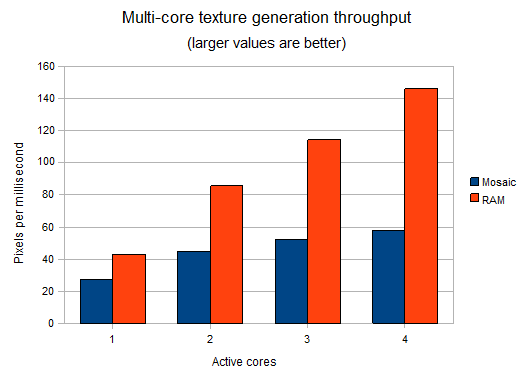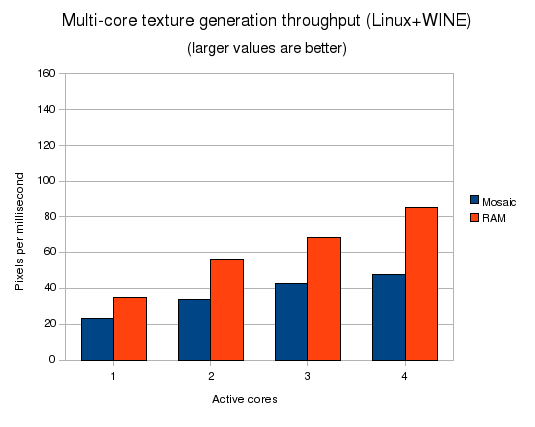Multi-core benchmarksHi All, I've been fixing and testing L3DT's mosaic system on multi-core processors, and I thought you might be interested to see some of the performance results. The graph below shows the pixel throughput of the texture map calculation for single core, dual core, triple core and quad core systems. Basically, this graph shows how many pixels the texture generator can process in a given amount of time, so larger numbers mean faster calculations. There are a few interesting things to note here:
For completeness, the conditions for these tests were:
Also, for the mosaic calculations, all maps were mosaics (heightfield, water map, attributes map, normals map, light map, shadow map texture map). Similarly, for the RAM maps, all maps were RAM-only (i.e. non-mosaic). That's all for today. If you'd like to make any comments or post questions, please do so in the users' forum. Cheerio, Aaron. PS: I you are using a multi-core processor with L3DT Professional, I would strongly recommend you upgrade to the latest developmental build (L3DT Pro v2.5d build 10, 12th of July '08), as it contains some substantial performance and stability improvements in the mosaic map system for multi-core builds. Supplementary results I re-ran the same benchmark tests for L3DT Professional in Ubuntu 8.04 with WINE 0.9.59. Plotted in the same fashion and on the same scale, these are the results for Linux+WINE: Note that the same general trends apply, but that emulation via WINE decreases the speed by ~20% for mosaic maps and 20-40% for RAM-only maps when compared to Windows Vista. Except where otherwise noted, content on this wiki is licensed under the following license:CC Attribution-Share Alike 3.0 Unported
|


